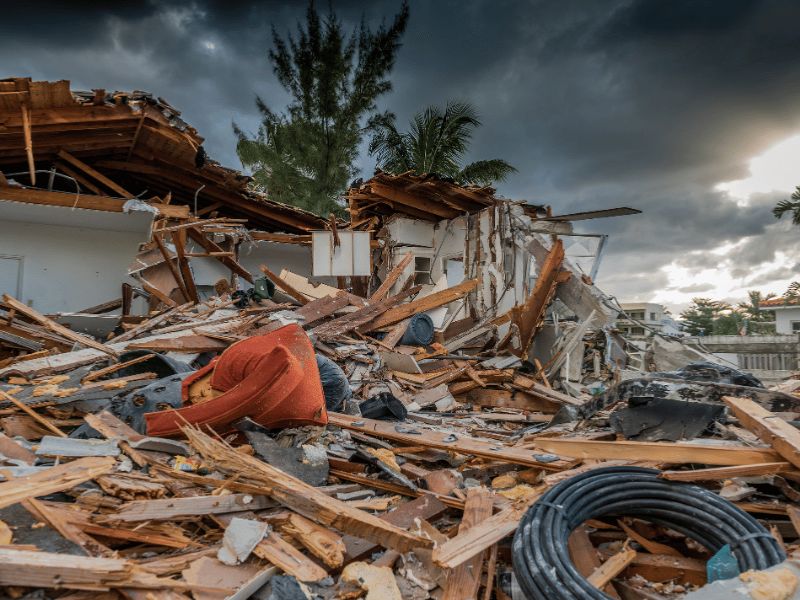When disaster strikes, the first thing that often comes to mind is survival—how to protect lives, homes, and essential services. In Miami, where hurricanes and tropical storms are a regular part of life, disaster preparedness is more than just a plan; it’s a necessity. But amidst all the focus on shelter, food, and medical aid, one crucial element often gets overlooked: sanitation. And that’s where portable toilets come into play. Believe it or not, the role of portable toilets in disaster relief efforts in Miami is nothing short of vital. Let’s take a closer look at how these humble facilities can make all the difference when nature wreaks havoc.
The Immediate Aftermath: Why Sanitation Matters
1. Preventing Public Health Crises
After a natural disaster, one of the biggest concerns is the potential for a secondary health crisis. Floodwaters can carry all sorts of nasty contaminants—think sewage, chemicals, and disease-causing bacteria. Without proper sanitation, the risk of outbreaks such as cholera, dysentery, and other waterborne diseases skyrockets. Portable toilets provide a controlled environment for waste disposal, reducing the chances of contamination and keeping the community safer during those critical first days after a disaster.
2. Restoring a Sense of Normalcy
In the chaos that follows a disaster, a little bit of normalcy can go a long way. Something as simple as having a clean, private space to use the restroom can restore a sense of dignity and comfort to those affected. It’s easy to underestimate, but when everything else is out of control, small things like this matter more than ever.
How Portable Toilets Are Deployed in Disaster Zones
3. Quick and Efficient Setup
When disaster strikes, time is of the essence. Portable toilets are designed for rapid deployment, making them ideal for emergency situations. Within hours, they can be transported to the affected areas and set up wherever they’re needed most—whether it’s near temporary shelters, emergency response hubs, or in communities that have lost access to their usual facilities.
4. Meeting Diverse Needs
Not all portable toilets are created equal, and that’s a good thing. In disaster relief efforts, there’s often a need for a variety of units to serve different populations. ADA-compliant units ensure that individuals with disabilities have accessible facilities. Larger units can accommodate families, while others may be equipped with handwashing stations to promote hygiene. By offering a range of options, portable toilets can meet the diverse needs of the affected population, ensuring that everyone is taken care of.
The Bigger Picture: Long-Term Relief and Recovery
5. Supporting First Responders and Volunteers
Let’s not forget about the unsung heroes of disaster relief—the first responders and volunteers who work tirelessly to help others. These individuals are often on the front lines for days, if not weeks, and they need access to reliable sanitation facilities to continue their work. Portable toilets provide the necessary support, allowing them to focus on saving lives and helping communities recover.
6. Aiding in the Recovery Process
As the dust begins to settle and recovery efforts kick into gear, portable toilets continue to play a crucial role. In areas where infrastructure has been damaged or destroyed, these units can remain in place for weeks or even months, providing essential services until permanent facilities are restored. This continuity of sanitation helps to keep the community healthy and aids in the overall recovery process.
FAQs: Answering Common Questions
Q: How quickly can portable toilets be deployed after a disaster?
A: Portable toilets can be deployed within hours, depending on the severity of the disaster and accessibility of the affected area. Vendors typically work closely with emergency response teams to ensure a swift setup.
Q: What makes portable toilets suitable for disaster relief?
A: Portable toilets are mobile, quick to set up, and can be placed virtually anywhere. They’re also self-contained, which means they don’t require existing infrastructure like plumbing or electricity—making them ideal for emergency situations.
Q: Are there any eco-friendly portable toilet options for disaster zones?
A: Yes, there are eco-friendly portable toilets that use minimal water and environmentally safe chemicals. These units can help minimize the environmental impact during relief efforts.
Q: How do portable toilets contribute to public health during a disaster?
A: By providing safe and sanitary waste disposal, portable toilets reduce the risk of disease outbreaks, which is a major concern in the aftermath of a disaster. They also promote hygiene by offering facilities that encourage proper handwashing and sanitation.
A Vital Component of Disaster Relief
When the unexpected happens, and Miami faces the wrath of nature, every resource counts. The role of portable toilets in disaster relief efforts in Miami is a vital, yet often underappreciated, part of the overall response. From preventing public health crises to supporting first responders, these facilities provide much more than just a place to go—they offer safety, dignity, and a small piece of normalcy when everything else feels uncertain. So the next time disaster strikes, remember that portable toilets are not just a convenience—they’re an essential part of keeping our community safe and resilient.

